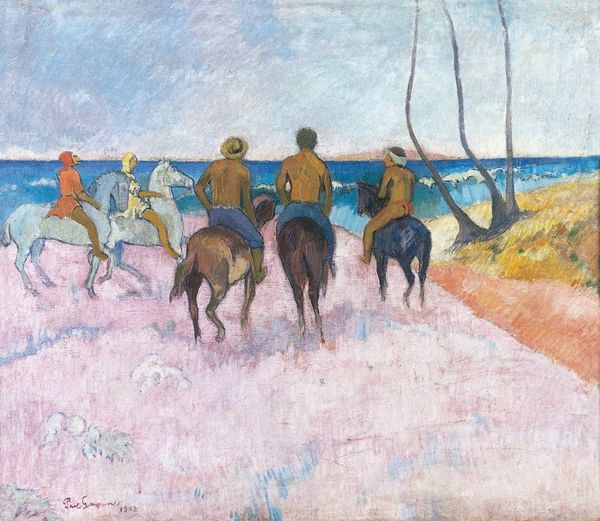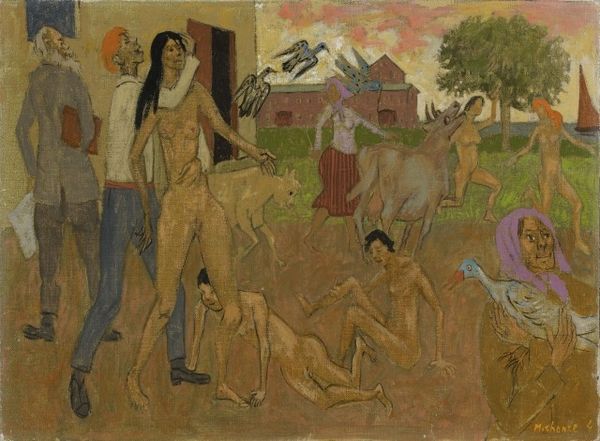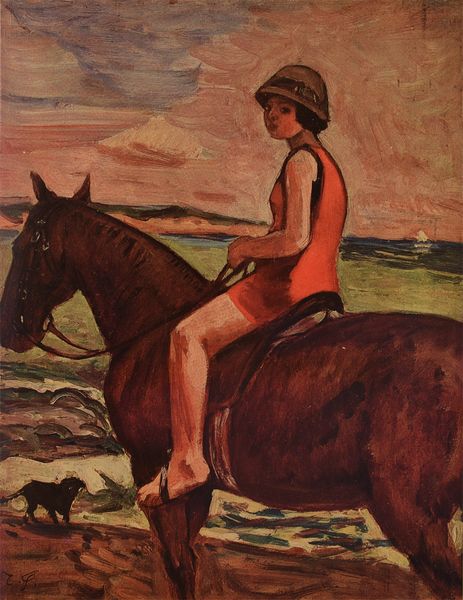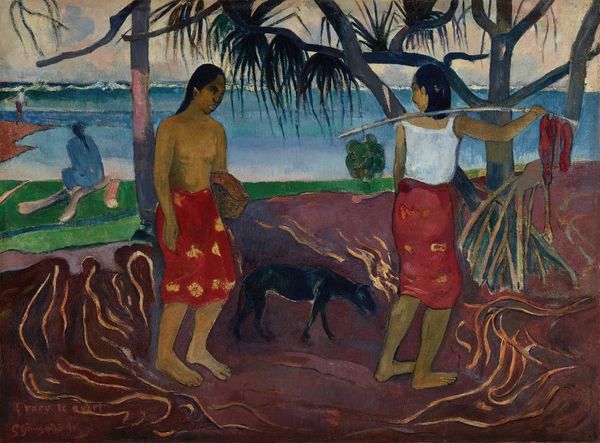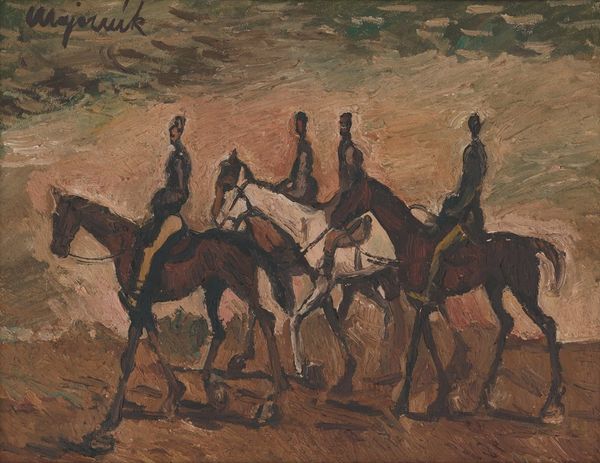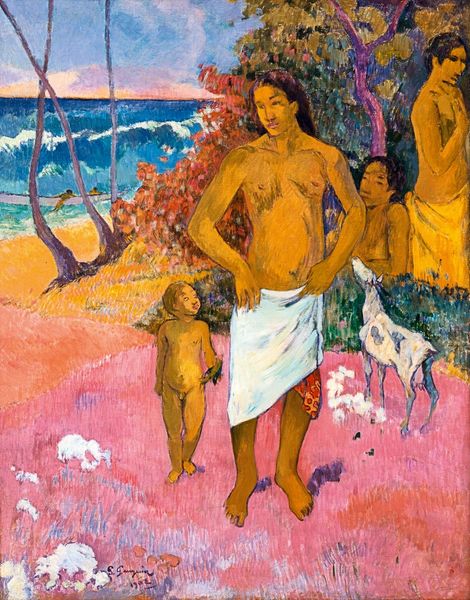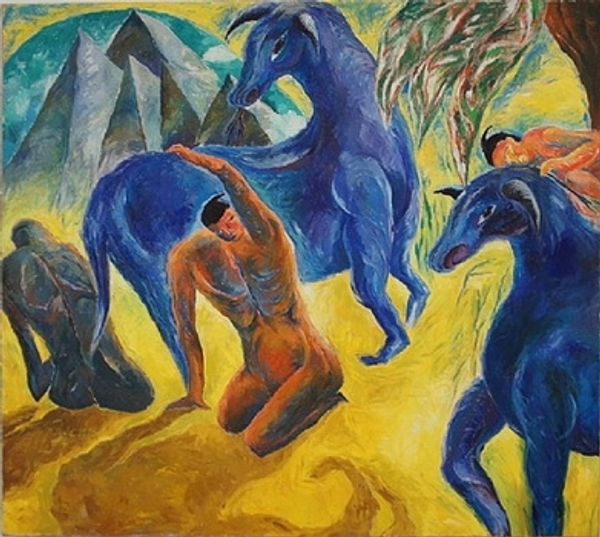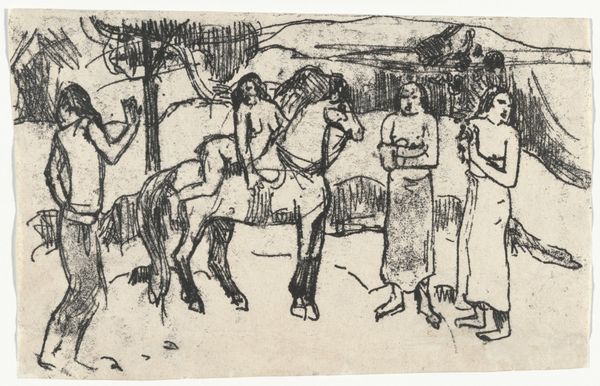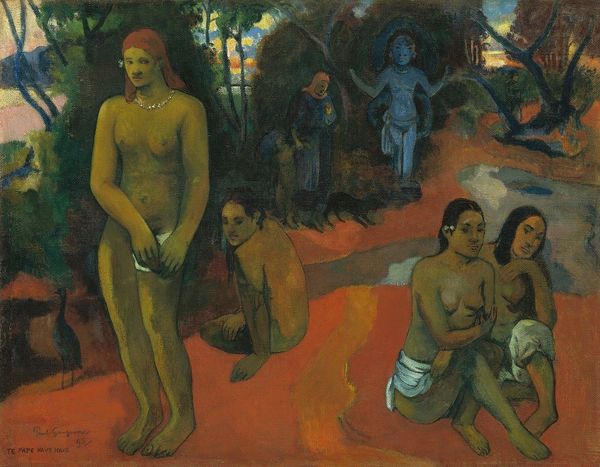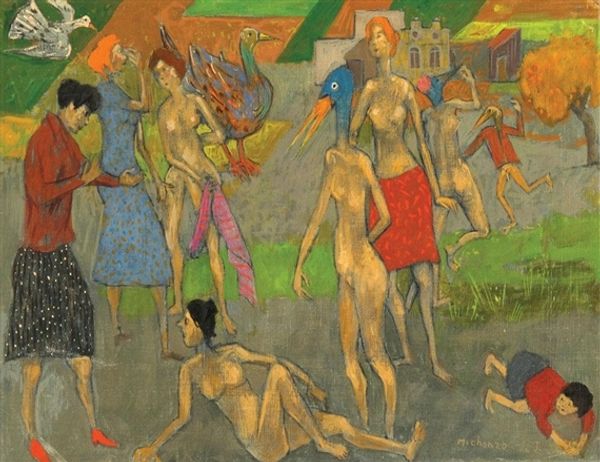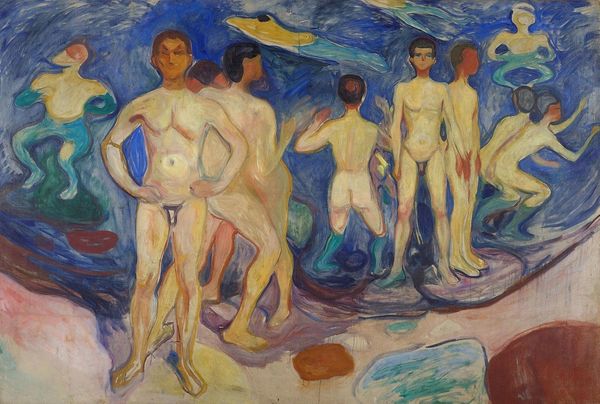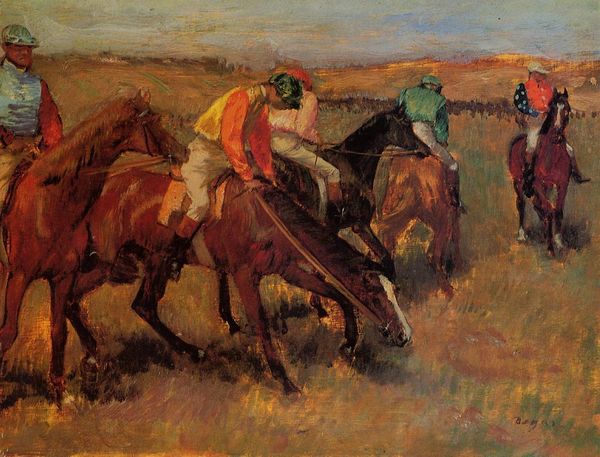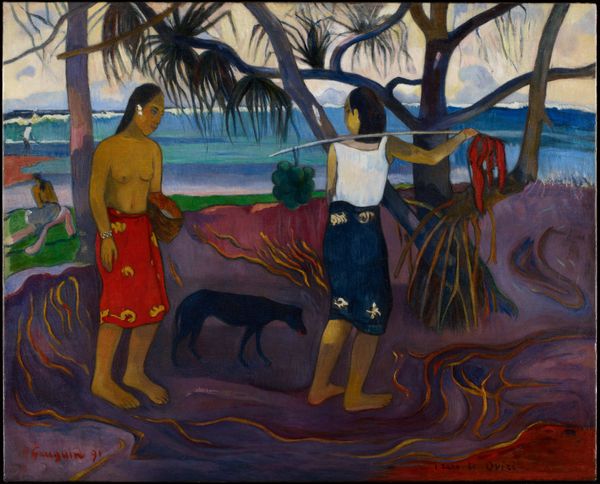
painting, oil-paint
#
narrative-art
#
painting
#
oil-paint
#
landscape
#
figuration
#
oil painting
#
horse
#
men
#
post-impressionism
Copyright: Public domain
Curator: At first glance, there is something almost dreamlike about this piece; the colors seem to glow with a strange intensity. Editor: We're looking at "Riders on the Beach II", crafted by Paul Gauguin around 1902. This painting, residing at the Folkwang Museum, beautifully showcases Gauguin's post-impressionist style using oil paint. He made this fairly late in his career when he was living in Tahiti. Curator: Ah yes, Tahiti, an environment deeply tied to Gauguin's artistic practice. Note the prevalence of the pink hues; how they almost obscure the tangible reality of the scene. It's fascinating how he handles materiality. The pink of the ground blends seamlessly into the figures, it feels like a flattened plane, lacking true depth. The whole construction is very intentionally “art-like” and flouts a sense of reality. Editor: And isn't that distortion purposeful? Consider how Gauguin deployed such imagery to convey a sense of "primitive" exoticism—exotic for European audiences, of course. Think about the art market and its insatiable appetite for images of faraway lands and people, particularly at the turn of the century. The Tahitian people in his art are stripped of their historical, socio-political circumstances, in a sense creating a fantasy out of reality. Curator: True, and we can delve deeper into the material origins of that aesthetic. Think about how mass-produced pigments impacted the colors he was able to use. Gauguin exploits the raw intensity that industrialized paint manufacturing provides, almost reveling in colors you wouldn’t find “naturally” in that environment. It heightens the image's visual appeal but simultaneously flattens our perception of the labor behind it. Editor: And what about the perspective of the Indigenous populations depicted? Gauguin was not merely representing, but also actively shaping a Western perspective of the region and its inhabitants, a gaze filtered through colonial power dynamics. These images had an enormous impact, creating lasting visual tropes of the South Pacific that continue to this day in media, and thus informing our perceptions of other cultures. Curator: Exactly. So, while aesthetically striking with its material boldness and evocative composition, we've underscored how "Riders on the Beach II" exists within a complex interplay of artistry, industrialized manufacturing, and the market forces shaping and commodifying culture. Editor: It's a stark reminder how artworks aren't merely pretty pictures but documents enmeshed in a web of social, historical, and material conditions. Food for thought, certainly.
Comments
No comments
Be the first to comment and join the conversation on the ultimate creative platform.
